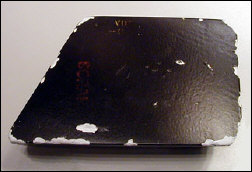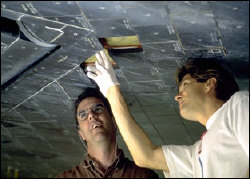Space Shuttle Thermal Protection System
The space shuttle's Thermal Protection System (TPS) is designed to keep the temperature of the orbiter's aluminum frame below 177 degrees Celsius, even on some surfaces that are warmer. exposed, the temperature can reach up to 1,260 degrees Celsius.
The type of tiles used are two colors: white and black. The white ones are located in the areas where the temperatures are relatively lower than the rest of the ship, the opposite happens with the black ones; These, due to their color, absorb the highest temperatures and are located in the lower and front part of the orbiter, in addition to covering the front part of the wings. In addition to the thermal protection tiles, the shuttle has a heavier coating made of reinforced carbon and is only used for protection from the highest temperatures. The amount of this material used is less than in the case of tiles and this is so due to its weight. Reinforced carbon surfaces are located on the nose of the craft and the leading edges of the wings.
Structure of the thermal protection tile
In the past, the Mercury, Gemini, and Apollo missions used a protective ablation shield that burned up during uncontrolled reentry. While it protected the astronauts upon their return, it also rendered the capsule unusable for future space missions. Another of its negative effects was that it could break during reentry, as was feared during the Mercury 6 mission, in the Freedom 7 capsule piloted by John Glenn.
The materials used have evolved over time, lately more flexible coatings have replaced many of the white tiles because they have the advantage of covering an area equivalent to 25 tiles.
The space shuttle contains nearly 23,000 thermal protection tiles whose function is not only to protect the ship from the immense heat produced during reentry, but also to withstand temperatures ranging from -128 °C to 93 °C during 90 minute orbits around the Earth.
Contenido relacionado
Tokamak
Serigraphy
File server



